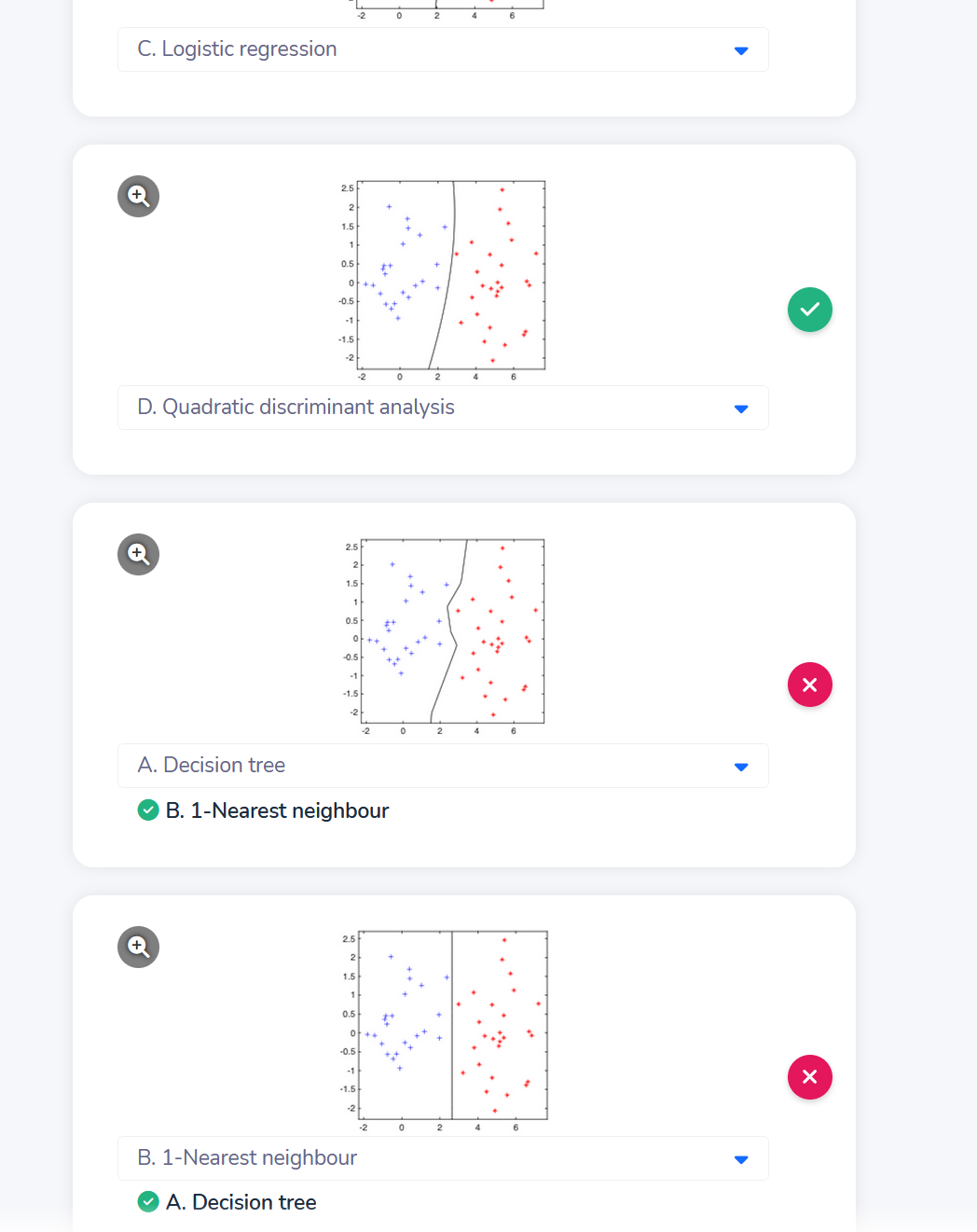
Separating Hyperplanes
- when you want to find a decision boundary, avoid estimating densities
- linear decision boundry,就是设置这个式子为0,就是它的decision boundry hyperplanes separate feature space into regions
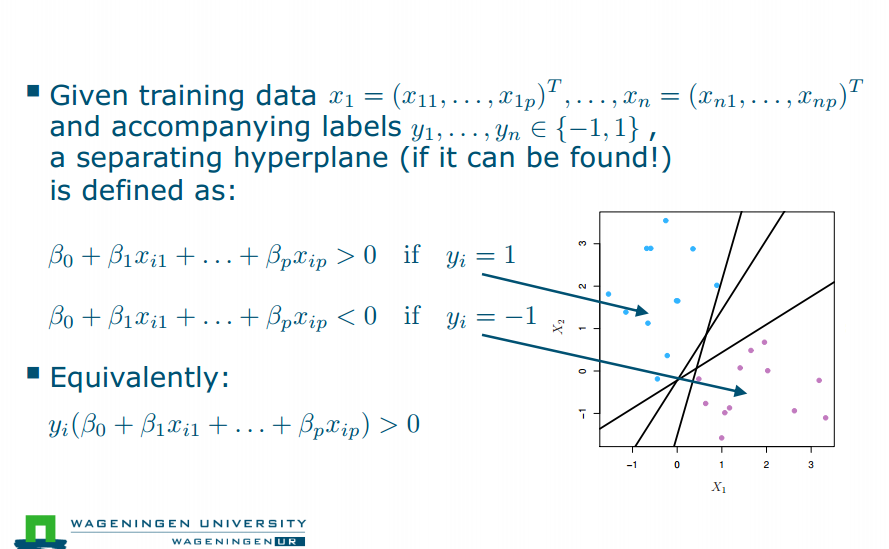
- for new X, 可以带入最后一个式子,然后看y=1,还是y=-1来分类 exercise1. This problem involves hyperplanes in two dimensions. (a) Sketch the hyperplane 1 + 3X1 − X2 = 0. Indicate the set of points for which 1 + 3X1 − X2 > 0, as well as the set of points for which 1 + 3X1 − X2 < 0. (b) On the same plot, sketch the hyperplane −2 + X1 + 2X2 = 0. Indicate the set of points for which −2 + X1 + 2X2 > 0, as well as the set of points for which −2 + X1 + 2X2 < 0.
Maximum margin classifiers
(怎么找一个最佳的hyperplane)
- generalization link to regularization
- for generalization, the decision boundary should lie between the class boundaries
- Maximize perpendicular distance(最大化垂直距离) between the decision boundary and the ==nearest observations==: the margin M the decision boundary then only depends on a few points on the margin, the support vectors:if you remove one from other ob, nothing changes
- 所以, leave one out will fail
Construction
maximize the margin(尝试最大边际化), under the constraint that training observations are classified correctly
Limitation
● separable classes ● linear separability ● two classes
Problems
- Maximum margin classifier is prone to ==overfitting==: very sensitive to training set
- When classes ==overlap==, separating hyperplane does not exist
- We need to make a trade-off between errors on the training set and predicted performance on the test set (generalization)
Solution: The soft margin
为了解决上面的问题
- Solution: ==allow (some, small) errors on the training set,==introducing slack (松弛)variables ∊i ≥ 0»>Add slack variables to maximum margin classifier, but limit total slack to C: the trade-off parameter
- 变化:M» M(1-e),然后引入一个C,误差平方和<=C
- C influence solution: There is no a prori best choice for C

The multi-class case
- one-versus-one
- one- versus-all exercise
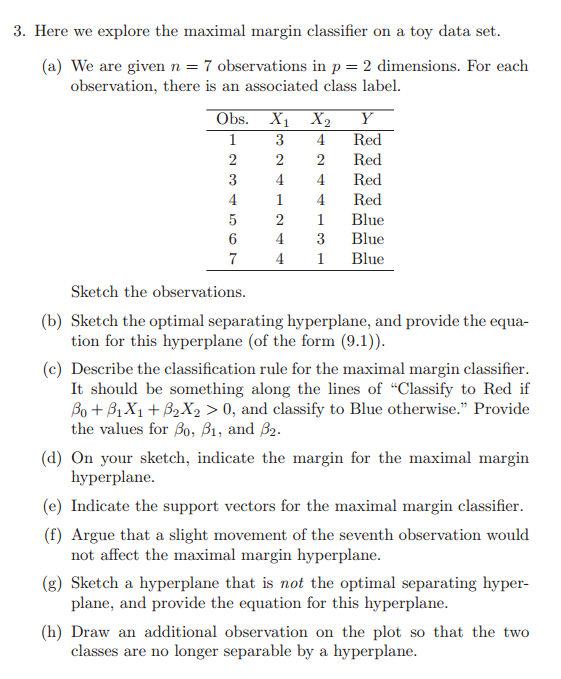
Optimization(optional)
从最大化M(margin)到最小化一个系数w和常数b的平方和 但是为了解决is a (large) quadratic programming (QP) problem 又引入了lagrange multipliers alphai
The nonlinear case
Ideal: classes may become linearly separable if higher order terms are added(cf. nonlinear regression) ![[22e573c5252d8db1948d586ddaa54dd.png]]
Questions
- feature是要平方还是开方,等等,我不知道
- efficiently train the SVC,就是p= 10 ,如果要3次,就会有286种组合方式了
The Kernel Trick
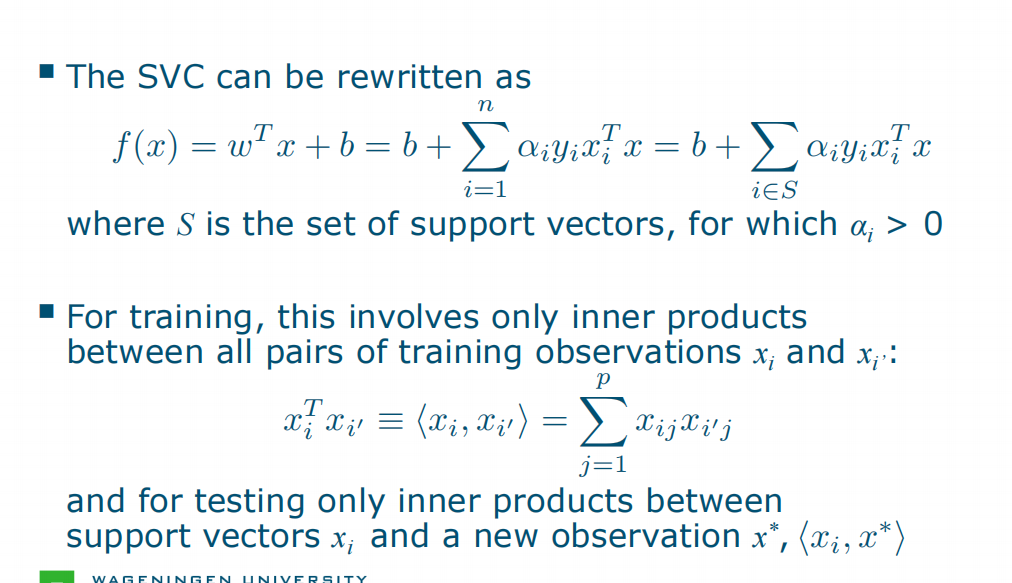 训练阶段,我们需要计算所有训练样本之间的内积,如 xi 和 xi’ 之间的内积。训练完成后,当我们需要对新的样本进行分类时,我们只需要计算支持向量 (support vectors) 与新样本之间的内积。
训练阶段,我们需要计算所有训练样本之间的内积,如 xi 和 xi’ 之间的内积。训练完成后,当我们需要对新的样本进行分类时,我们只需要计算支持向量 (support vectors) 与新样本之间的内积。 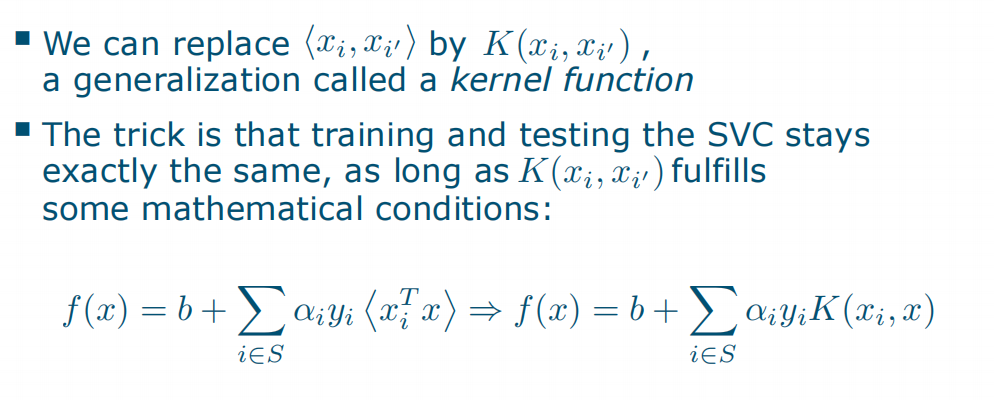 引入一个用于泛化的核函数Think of kernel functions as similarities: large when the inputs are very alike, small when they are not
引入一个用于泛化的核函数Think of kernel functions as similarities: large when the inputs are very alike, small when they are not 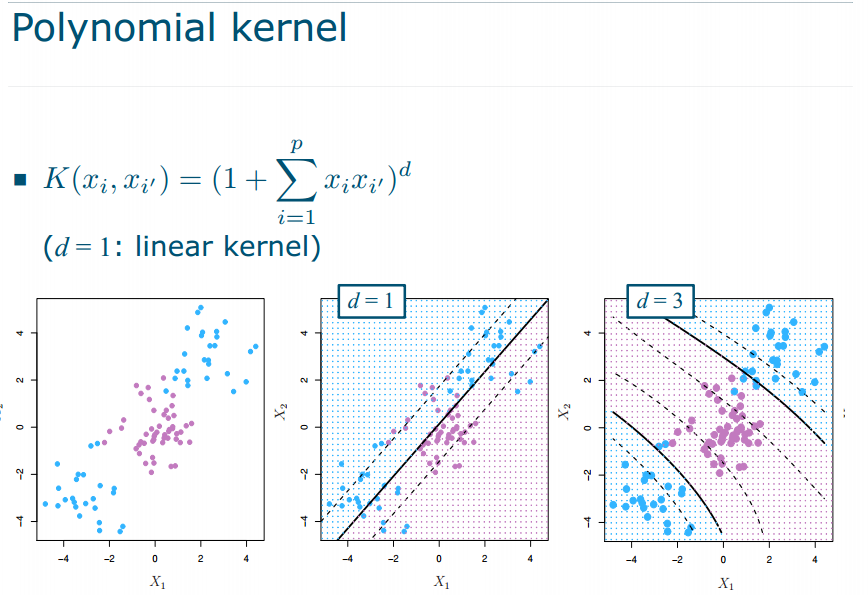
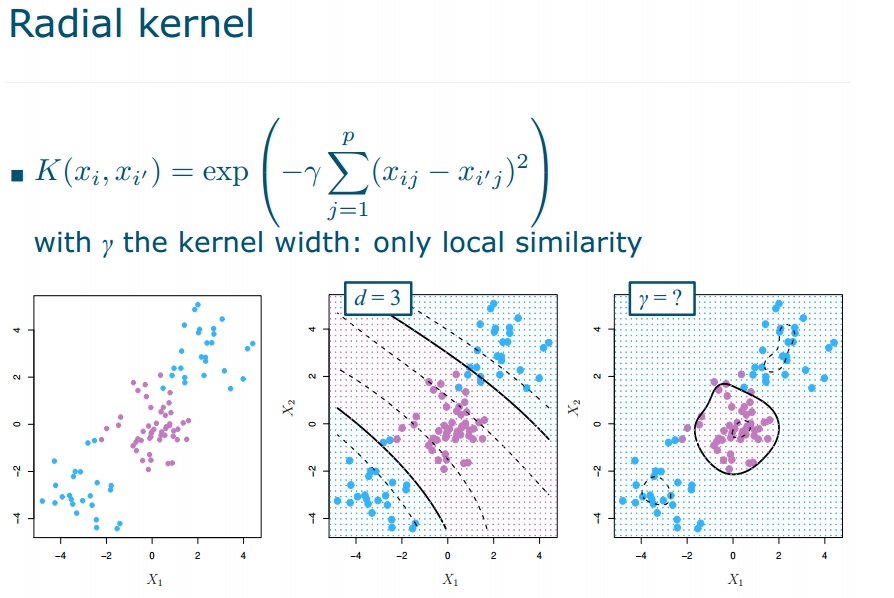 到这一步了,才有两种方法可以选择K(x_i, x)
到这一步了,才有两种方法可以选择K(x_i, x) - Polynomial kernel
- Radial kernel
The support vector machine
Choosing Kernels
What kernel functions should we use? type: prior knowledge of problem, trial-and-error parameters: cross-validation, like for C exercise
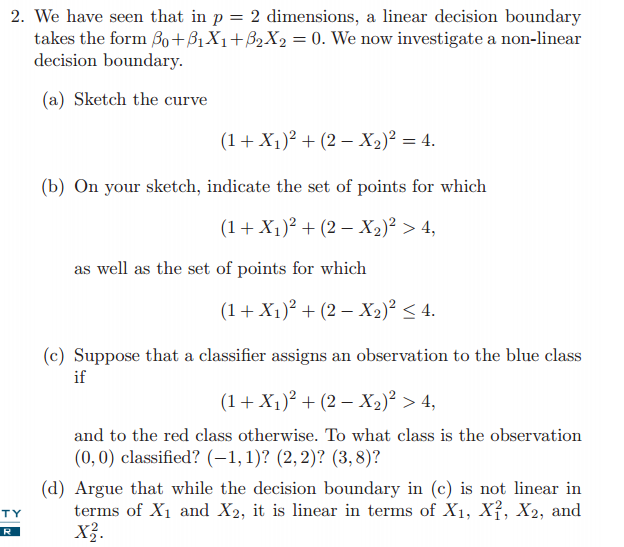
More Kernels
A large number of kernels have been proposed,not limited to numerical/vector data! ● Vector kernels ● Set kernels ● String kernels ● Empirical kernel map ● Kernel kernels ● Kernel combination ● Kernels on graphs ● Kernels in graphs ● Kernels on probabilistic models
Recap
- Separating hyperplane: any plane that separates classes
- The support vector machine has evolved from fundamental work by Vapnik: separable, linear problems: maximum margin classifier non-separable, linear problems - add slack variables:support vector classifier non-separable, non-linear problems - use kernel trick:support vector machine
- Training involves quadratic programming (optimization)
The final classifier only depends on the support vectors
- SVMs are widely used and work well in many cases,but care needs to be taken in selecting C, the kernel type and its parameters (using cross-validation)
- The kernel trick: replace inner products by more general kernel functions can be applied in many other algorithms
- Many kernels have been proposed for non-vector data, i.e. sets, strings, graphs etc.: very useful in bioinformatics, vision, document analysis etc.
- SVMs are linked to logistic regression (section 9.5, not discussed here)
Support Vector
Support Classifiers
文档信息
- 本文作者:Xinyi He
- 本文链接:https://buliangzhang24.github.io/2024/02/13/MachineLearning-8.-Support-Vector-Machines-and-Kernels/
- 版权声明:自由转载-非商用-非衍生-保持署名(创意共享3.0许可证)
